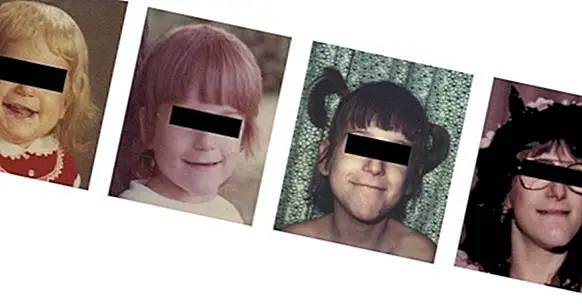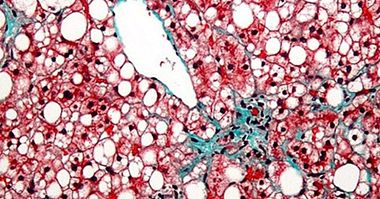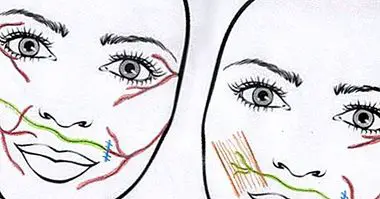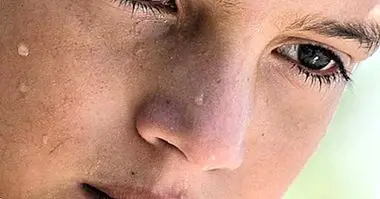Riley-Day syndrome: symptoms, causes and treatment
The color of our eyes and skin, the shape of the nose, our height, the appearance of our face, part of our intelligence and part of our character are aspects largely inherited and derived from the expression of our genes. However, sometimes transmitted genes undergo some type of mutation that can be maladaptive or even clearly harmful, and may appear some kind of genetic disorder.
Although some of these disorders tend to occur with a certain prevalence, in many other cases we can find rare and very infrequent alterations over which there is very little scientific knowledge, being little investigated due to its low prevalence. One of these disorders is the so-called Riley-Day syndrome, or family dysautonomia , a strange neurological syndrome that we are going to talk about throughout this article.
- Related article: "The 15 most frequent neurological disorders"
Riley-Day syndrome: general description
Riley-Day syndrome is a strange disease of genetic origin, very unusual and that it can be classified as peripheral autonomic neuropathy .
Also called familial dysautonomia or hereditary sensory neuropathy of type 3, it is a condition that appears congenitally and that generates affectation in a large number of autonomic and sensorial systems, progressively causing failures in multiple systems of the organism which are derived of the involvement of nerve pathways of the autonomic or peripheral nervous system .
It is a chronic condition that generates a progressive affectation. The prognosis of this disease is not positive, most of whom were affected during childhood or adolescence until recently. However, medical advances have allowed about half of those affected to exceed thirty years of age or even reach forty.
- Perhaps you are interested: "Peripheral nervous system (autonomous and somatic): parts and functions"
symptom
The symptoms of Riley-Day syndrome are multiple and of great importance. Among some of the most relevant we can find the presence of cardiac alterations, respiratory and pulmonary problems among which pneumonia by aspiration of the contents of the digestive tract, inability to manage body temperature (being able to suffer hypothermia or hyperthermia) and problems in the tube digestive in which there are problems of intestinal motility, digestion, reflux and frequent vomiting.
Muscle hypotonia is also relevant from birth , as well as apneas during sleep, lack of oxygen, fever, hypertension and even seizures.
There is also a generalized delay in development, especially in milestones such as language or walking. The tongue is also much smoother than usual and has few fusiform taste buds, something that is also linked to the difficulty in perceiving the taste.
Probably one of the symptoms that most often draw attention is the fact that these people often have a very diminished perception of pain. Far from being a positive thing, it is a great danger to the lives of those who suffer it because they are often not aware of suffering injuries, injuries and burns of great relevance. As well usually have problems or alteration in the perception of temperature or vibration .
It is also observed the absence of tears production in crying since childhood, a condition known as alacrimia.
It is usual that morphological level end up appearing characteristic physiological features, such as the flattening of the upper lip, a decrease in the nasal passages and a rather prominent lower jaw. As well Scoliosis is often seen in the spine , as well as that who suffers maintain a low stature. Finally, the bones and muscles of these people are often weaker than those of the majority of the population.
Causes of this alteration
The Riley-Day syndrome is as we have said a disease of genetic origin. Specifically, it has been identified the existence of mutations in the IKBKAP gene located on chromosome 9 , which is acquired by autosomal recessive inheritance.
This means that the disorder that faces inheritance will require that the subject inherits two mutated copies of the gene in question, with the same mutation both parents. This does not mean that the parents have the disorder, but that they are carriers of the gene in question.
The Riley-Day syndrome occurs mostly between descendants of people with the disorder and people of Jewish descent from Eastern Europe , being advisable of belonging to one of these groups to make a genetic advice to check the existence of the mutated gene in order to assess the probability that the offspring may get to suffer from the disorder.
Treatment
The Riley-Day syndrome is a genetic condition that does not have a curative treatment, being a chronic disease. But nevertheless, you can carry out a symptomatic treatment in order to reduce the disease caused by the disease, improve the quality of life and greatly increase the life expectancy of these people.
Specifically, anticonvulsant drugs will be used at the pharmacological level in order to prevent the onset of epileptic seizures, as well as antihypertensive drugs when necessary. Conversely, if there is hypotension, food and health guidelines must be taught to raise it again. Vomiting, a frequent symptom, can be controlled with antiemetic drugs.
Different pulmonary problems may require different types of treatment, for example in order to eliminate the content of the stomach aspirated by the lungs or drain excess mucus or fluids . Likewise, surgery may be needed to correct vertebral, respiratory or gastric problems.
In addition to all the above, the prevention of injuries is important, conditioning the environment. Physiotherapy is essential in order to improve muscle tone, especially in the torso and abdomen in order to favor breathing and digestion. As well It is recommended that the intake be carried out in an upright position .
The affected person and his family may also require psychological therapy to solve problems such as conflicts derived from behavioral problems, depression, anxiety and irritability. Psychoeducation is also necessary both to understand the situation and to offer guidelines for action. Finally, it may be useful to resort to mutual help groups or associations of affected and / or relatives.
Bibliographic references:
- Axelrod, F.B. (2004). Familial dysautonomy. Muscle Nerve, 29 (3): 352-63.
- MedlinePlus (s.f.). Family dysautonomia [On-line]. Available at: //medlineplus.gov/english/article/001387.htm.
- Sarnat, H.B. (2016). Autonomic neuropathies. In: Kliegman RM, Stanton BF, St. Geme JW, Schor NF, eds. Nelson Textbook of Pediatrics. 20th ed. Philadelphia, PA: Elsevier.



















